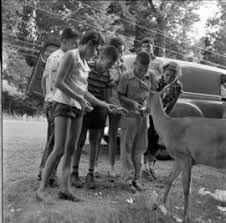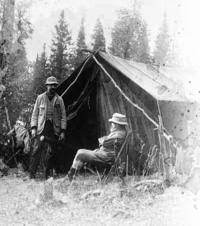A BOOK REVIEWER? By Ralph Bice
From May 4, 1977
I may get into an argument or two over this column but since I am in some sort of trouble most of the time more will not matter much.
Recently I was sent a copy of the latest Pictorial History of Algonquin Park. Many of the people who had spent many years in Algonquin Park were asked for some pictures that had to do with olden days in that famous recreational wilderness. I must admit I did have some that might have helped but mine are all camping scenes and would not have fitted in. Many of the pictures were of many of the places I have been over the years and looking at them brought back memories.
Some of the names mentioned were a bit before my time but most of them I knew. And since my father’s people were in Algonquin Park as we know it now, years before it became a park, I am familiar with much of the early history.
If I have faults to find (and who would care what an old guide thinks) the first would be the size of the book. It could have been twice as large and still miss a lot of history. Then there is so little mention made of park anglers. It did not even show the gathering of rangers at the time of G.W. Bartlett’s resignation party. And not mention of any of the guides.
Before and during world war one there were a great many men acting as guides in the park, and many of the areas were opened up by these same guides. Very seldom did a party of campers or fishermen go into the woods without guides, and there were many top woodsmen guided in Algonquin Park seventy years ago. Even up until the road was built there were many guides at each of the well known resorts.
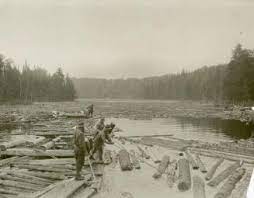
I have read most of the stories written about the Park. I know that everyone privileged to see this book will enjoy it. Many will have the same feeling of nostalgia as I had but I wish the author had stuck to older times and not included people camping with cars.
I am going to make a few comments. Some will be my own opinion but most will be based on events of those times as I have known them or have been told by others who were there.
The writer mentions about square timber and the amount taken down the Ottawa River. Years before the Park was established square timber was cut in Devine Township. One camp was at the eastern end of what was then called Long Lake, now called Long-bow. The timbers were hauled upstream on the then Pine River (now called the Tim River) up above Tim’s Lake, then taken over the divide by a tow engine, and the timbers then driven down the Magnetewan River to Byng Inlet, then rafted and towed to Montreal.
Even after the railroad came, square timber was driven to Kearney and loaded on cars for the trip to ocean going ports.
About this time (late 1880’s) an American lumber company had obtained cutting rights to a block of timber in Butt township. These logs were also driven down the ‘Mag’ to Byng Inlet, then boomed and towed to Bay City, Michigan. It is a matter of record that one ‘drive’ had logs that averaged over 500 board feet per log.
Speaking of log drives little mention is made of one of the most famous log drives in history; when Gilmour’s drove their logs all the way to Trenton. The first year, 1891, the first flood was getting away and they had to dynamite the ice on Potter Lake to get the logs started. Both drives took two years to get to their destination. Mention is made that the reason the company failed was that the logs deteriorated due to their long time in the water. Many drives took two years. Booths on at least two occasions left their logs in Tims Lake for one summer and Lake Trevair more than once had logs left there until the next season.
For some unexplained reason the pine around that area, while very plentiful, was not number one in quality, which was shown when they had the mill at Mowat.
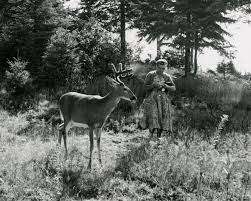
Naturally I disagreed when I read that rangers hunted wolves in the “mistaken” belief that fewer wolves meant more deer. The writer should explain why it is there are more deer where there are no wolves, and the Park studies tell us that in the Park alone the wolves were killing 6,000 deer every year along with many beaver and moose.
Then the picture of the truck load of deer waiting to be loaded on the train. I believe I am the only one left who was on that hunt. No one will ever see deer so plentiful as they were in the fall of 1917. And it brings back memories when you travel the whole summer in the park and never see a deer. The odd part of that hunt was in the more than eight hundred deer, we did not take one buck that weighed over 200 pounds.
There is a nice picture of a group of ladies resting on the verandah of Highland Inn wearing clothes which were the vogue of that date. It made me think of the first party I guided as the only guide in September of 1917.
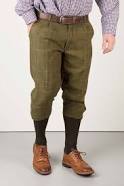
The party, a Mr. and Mrs. Van Horn, arrived on the morning train, got a room and changed into their camping clothes. Then they found they would not be leaving until the afternoon train and walked into the dining room so dressed. The lady had a blouse with a full neck, breeks, and boots laced right up to her knees. She walked into the dining room and several of the older ladies were so embarrassed they got up and walked out.
Mention is made of only a few men who have been in charge. One, Mr. G.W. Bartlett, served the longest and was there when the going was well. But he was not a Booth foreman. He was a scaler. Had been a pugilist as his father had before him. There is a record of him being asked to go some distance and settle a group of shantymen who had become out of hand. This he did, and with the help of three men who just had to keep men from attacking him from behind, he put the whole camp in order.
He is credited with trying to introduce elk and pheasants to the park. Elk were not tried until quite a few years after Mr. Bartlett left. And it was the Norwegian birds, ptarmigan that he tried, without success, to establish in the park.
I have guided from all those hotels mentioned and pictured. And made friends that have lasted all through the years. So many stories come to mind as I look and read that book through. I hope that everyone who sees it can have as much pleasure in seeing all those old pictures as I have had.
